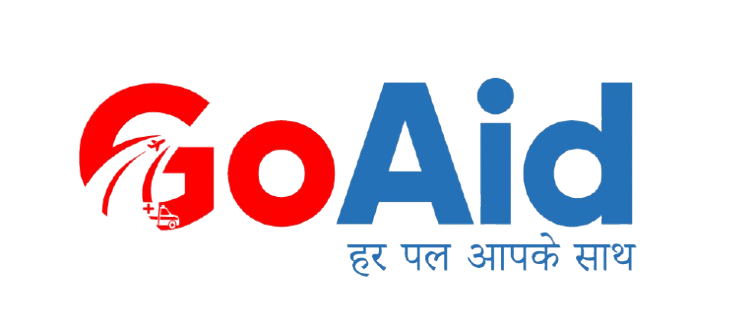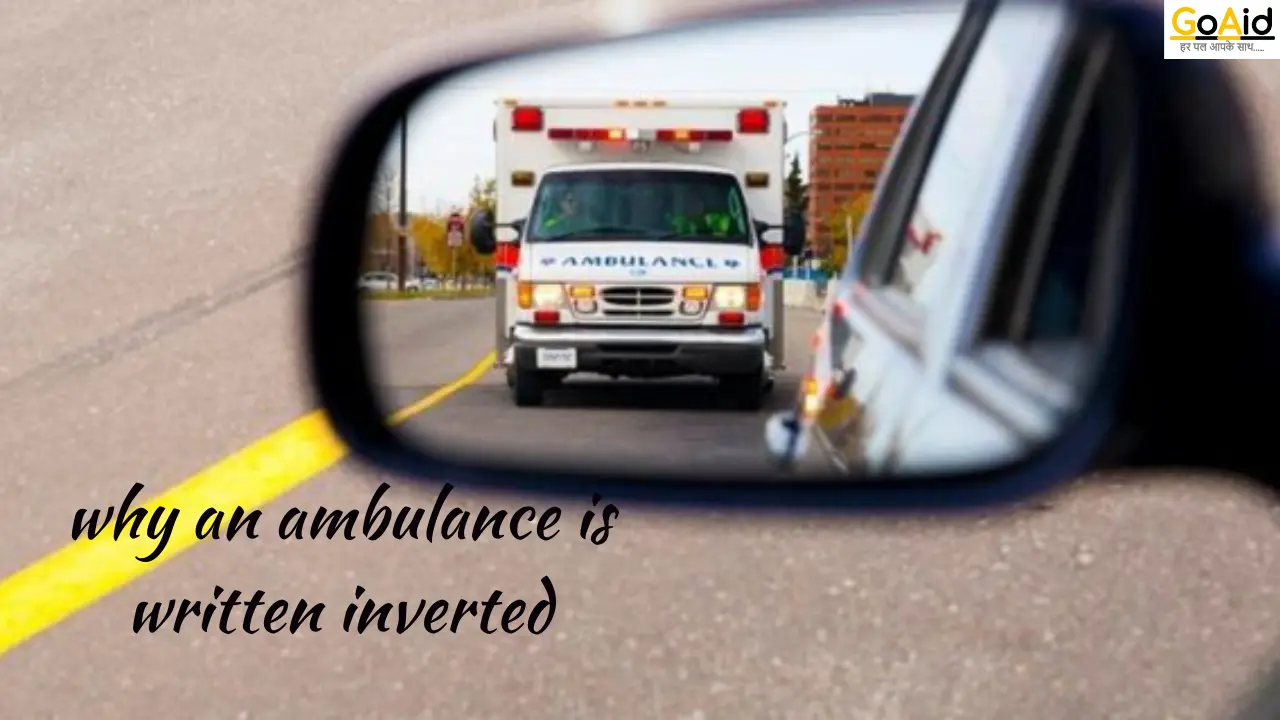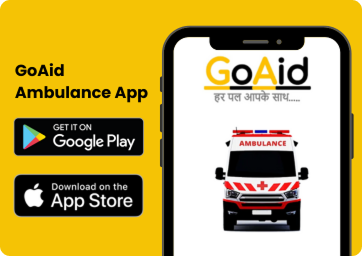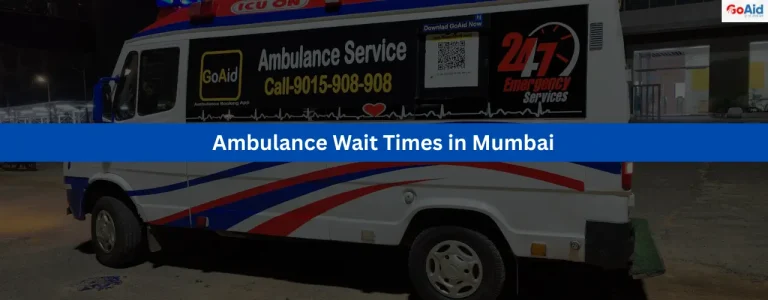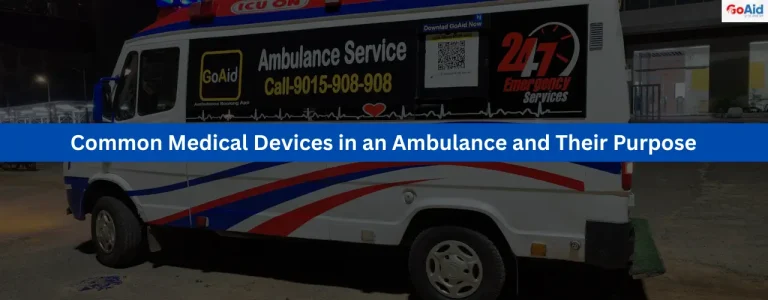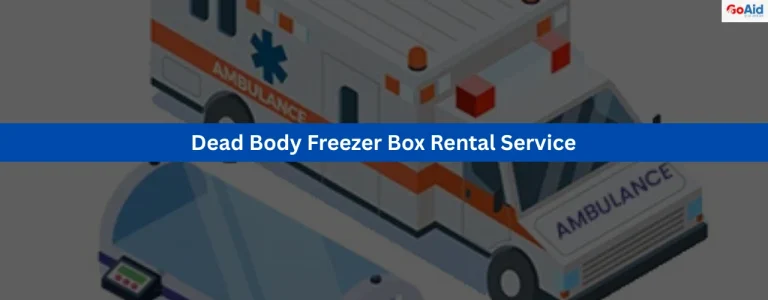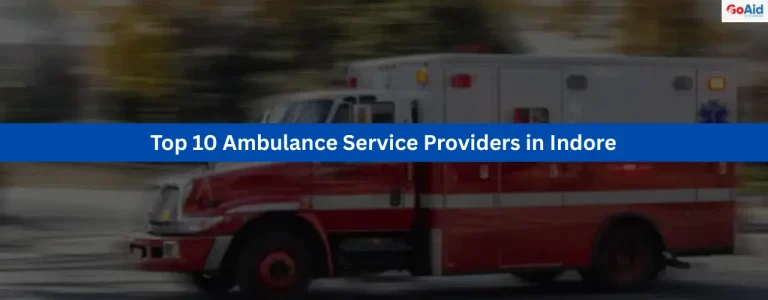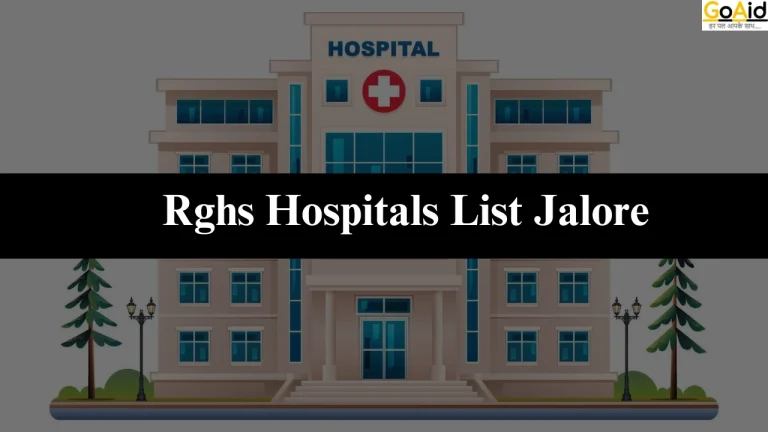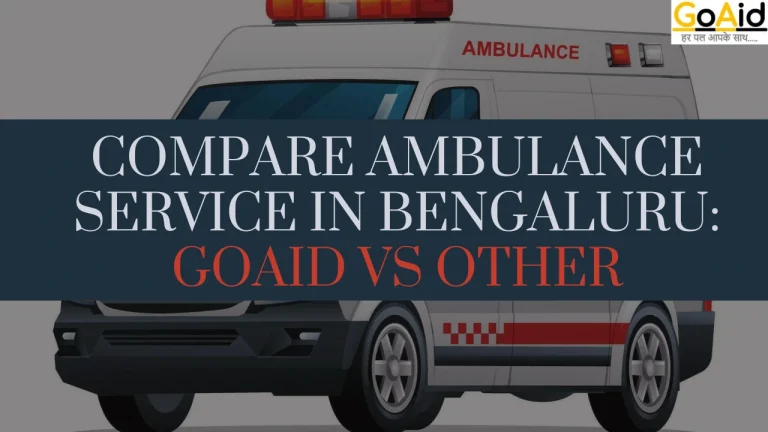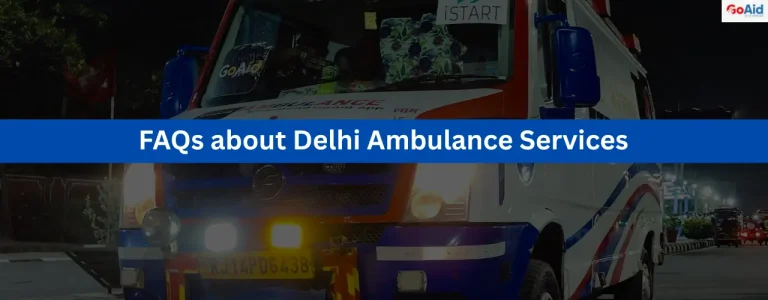In every part of the world, wherever the ambulance runs on the road, you can see one thing common in ambulances worldwide the text ŌĆśAmbulanceŌĆÖ is always written inverted on the front of ambulances. However, there is a solid reason to do so, but still, there are many people who are not aware of the Ambulance mirror writing reason. If you are also looking for ŌĆ£Why is ambulance text written inverted?ŌĆØ, then in this blog you will get your answer.
In this blog, we have added all the details about the purpose of inverted ambulance text. If you are also willing to know why an ambulance is written inverted, read this blog to the end.
So, letŌĆÖs start-
The reason why an ambulance is written inverted
The word “ambulance” is written inverted on the front of emergency vehicles to ensure it is readable in a rear-view mirror. This technique, known as mirror writing, allows drivers to quickly recognize the approaching ambulance and respond appropriately by moving aside or making way.
When viewed in a mirror, the reversed text appears correctly oriented, ensuring that the crucial message is immediately understood, thereby facilitating the ambulance’s swift passage through traffic. This practice of ambulance text written inverted, is a simple yet effective measure to enhance road safety and emergency response times, reducing potential delays in reaching critical care facilities and saving lives.
Read More: Ambulance service in India
Benefits of Ambulance text mirror image
These are the benefits of Ambulance text mirror image or ambulance text Written inverted:
- Enhanced Visibility: The mirror image of the word “ambulance” ensures that it is readily noticeable in rear-view mirrors, capturing drivers’ attention without delay.
- Quicker Response: By making the text easily readable in mirrors, it enables faster recognition of an approaching ambulance, prompting drivers to take swift action.
- Improved Safety: Clear and immediate communication of the ambulance’s presence helps reduce the risk of accidents, enhancing overall road safety.
- Efficient Traffic Management: Drivers can more effectively maneuver their vehicles to allow the ambulance to pass, improving traffic flow during emergencies.
- Reduced Delays: The quick identification of an ambulance through mirror writing minimizes delays in its journey, crucial for timely emergency response.
- Public Awareness: The use of mirror writing increases public awareness and understanding of emergency vehicle protocols, fostering a more cooperative driving environment.
- Compliance with Regulations: Many regions mandate the use of mirror writing on emergency vehicles, ensuring legal compliance and standardized safety practices.
- Visual Consistency: Mirror writing on ambulances maintains visual consistency across emergency vehicles, making it easier for drivers to recognize and respond appropriately.
- Psychological Impact: The unique and recognizable mirror image can create a strong visual cue, prompting a quicker mental response from drivers to make way for the ambulance.
- Emergency Readiness: Overall, the practice of mirror writing contributes to the readiness and efficiency of emergency medical services, ultimately supporting their mission to save lives.
Early days of ambulance services
In ancient times, various forms of medical transport existed, but it was during the Napoleonic era that organized ambulance services emerged. Ambulances, initially used for military purposes, evolved to transport injured civilians in emergencies.
The first instances of inverted ambulance writing
The earliest recorded instance of inverted ambulance writing dates back to the late 19th century. European cities like London and Paris adopted this unique lettering style to enhance visibility, allowing pedestrians and other drivers to read the name correctly when viewed through rear-view mirrors.
Also Read: The Difference between 102 and 108 Ambulance Service
The Science Behind Lateral Inversion
The phenomenon of lateral inversion occurs when images appear reversed laterally. Human vision and perception play a significant role in this effect, as our brains unconsciously interpret and correct the inverted text we see.
Understanding the concept of lateral inversion
The apparent peculiarity of ambulances with their names written in reverse has intrigued many, but there’s more to this design choice than meets the eye. To grasp the rationale behind this lateral inversion, we must explore the captivating world of optics and human perception:
- The Ingenious Use of Lateral Inversion
The inverted writing on ambulances is no accident; it’s a purposeful application of lateral inversion. By flipping the name “AMBULANCE” horizontally, designers create a visual effect that facilitates reading the name correctly through rear-view mirrors and approaching traffic.
- Enhancing Visibility during Emergencies
Ambulance services need to be instantly recognizable, and the laterally inverted lettering serves this crucial purpose.
- Impact of Human Perception
Our brains are remarkable in their ability to interpret and process visual information. The way our minds naturally correct the inverted text is a testament to the sophistication of human perception. By capitalizing on this cognitive phenomenon, emergency services optimize the visibility of ambulances.
Practical Reasons for Inverted Writing
The decision to employ inverted writing on ambulances goes beyond aesthetics; it is a well-thought-out approach driven by practical considerations. Here are ten compelling reasons behind this unique design choice:
- Mirror Legibility: When an ambulance approaches from behind, drivers and pedestrians can effortlessly read the mirrored name “AMBULANCE” in their rear-view mirrors, aiding quick identification.
- Rapid Recognition: In emergencies, seconds matter. The lateral inversion ensures instant recognition, prompting motorists to yield the right of way, expediting the ambulance’s path.
- Emergency Response Time: The swift identification facilitated by inverted lettering allows ambulances to reach the scene faster, potentially saving more lives.
- Global Standardization: The consistent use of laterally inverted names on ambulances across the world creates a standardized and recognizable visual cue for emergency vehicles.
- Minimizing Misinterpretations: Ambulance drivers often maneuver in stressful situations. The inversion minimizes the risk of drivers confusing their own vehicle’s name with another ambulance or emergency service.
- Enhanced Road Safety: The quick identification of ambulances reduces the chances of drivers panicking or making erratic decisions when an emergency vehicle is nearby.
Read More: Why is GoAid the Best Option During a Medical Emergency?
Symbolism and Recognition: The Power of Ambulance Name and Its Psychological Impact
Behind the seemingly simple inverted name “AMBULANCE” lies a wealth of symbolism and recognition that extends beyond mere design aesthetics.
1. Symbolism of Ambulance and Its Name
Ambulances have transcended their physical form to become potent symbols of hope, compassion, and aid. Their distinct appearance with bold red colors, flashing lights, and siren wails signals urgent assistance, instilling a sense of safety and reassurance in times of crisis.
2. Psychological Impact on People during Emergencies
In the face of emergencies, people often experience heightened emotions, anxiety, and vulnerability. The inverted name “AMBULANCE” acts as a psychological anchor, grounding individuals amidst chaos.
Also Read National Health Mission for Quality Healthcare for All Citizens.
Public Perception and Acceptance
The Acceptance of the general public toward this Inverted writing got enhanced as the result has been seen to the roads and emergency situations.
- Initial Reactions to the Inverted Ambulance Name
The introduction of ambulances with inverted lettering elicited curiosity and intrigue among the public. People couldn’t help but notice the unconventional design and wonder about its purpose and effectiveness.
- Public Opinion and Feedback
Over time, public opinion towards the inverted ambulance name evolved. Initially met with skepticism and resistance from some, the practicality of the design eventually garnered appreciation and acceptance.
Also Read: Why is Ambulance Service a Part of Emergency Service?
Flip it Around: The Curious Case of Ambulance’s Reverse Order
In the curious case of ambulances, a distinctive feature catches the eye ŌĆō the writing of AMBULANCE in reverse order. In this answer, we will get to know about the reasoning behind why an ambulance is written in reverse order or why an ambulance is written backward yields a fascinating insight into road safety and emergency response dynamics.
The deliberate choice of why an ambulance is written in reverse order stems from a strategic decision to enhance visibility and awareness to drivers who are ahead of ambulance vans or vehicles.
This unconventional method is designed to make the text readable when viewed in rearview mirrors. This method is used to address the critical question of why an ambulance is written backward.
By doing so, drivers on the road can swiftly recognize the approaching emergency vehicle.
When they identify an ambulance vehicle, they immediately facilitate quicker responses and yield the right of way.
Controversies and Challenges
Despite the widespread acceptance of the inverted ambulance name, this unique design choice has not been without its share of controversies and challenges. Let’s explore some of the criticisms surrounding the inverted writing and potential misunderstandings that have arisen:
1. Criticisms Surrounding the Inverted Writing
- Aesthetics vs. Tradition: Some critics argue that the laterally inverted lettering deviates from traditional ambulance designs, believing it may compromise the overall aesthetics of the vehicle.
- Confusion with Other Vehicles: In rare instances, the inverted lettering has been mistaken for other emergency vehicles or commercial transport, potentially causing delays in response times.
- Resistance to Change: As with any design innovation, there are individuals who prefer traditional methods and may resist embracing inverted writing as a new standard.
Read More: Difference Between Ambulance Services
2. Potential Misunderstandings and Misinterpretations
- Cultural and Linguistic Differences: In regions with diverse languages and writing systems, the inverted lettering may be less familiar or challenging to interpret, leading to potential misunderstandings.
- Emergency Awareness for Visitors: International visitors may not immediately recognize the laterally inverted name, leading to confusion during emergencies.
- Inattentional Blindness: In highly congested areas or stressful situations, some individuals might experience inattentional blindness, failing to notice the inverted lettering even when it is visible.
From A to Z Backwards: The Unconventional Writing of Ambulance
The unconventional writing of ambulances backward on emergency vehicles presents a unique linguistic phenomenon. This phenomenon serves a vital purpose in road safety and emergency response. The question of why an ambulance is written backward reveals a deliberate strategy. This strategy is aimed at enhancing visibility and communication on the road.
By flipping the text from A to Z backward, the intention is to make it easily readable when viewed in rearview mirrors. This is done to address the core query of why an ambulance is written in reverse order.
This linguistic inversion plays a crucial role in supporting emergency response times. When motorists spot the mirrored ambulance in their rearview mirrors, they instinctively recognize the urgency of the situation. This recognition prompts them to yield and allow the vehicle to pass without interrupting the way.
The decision behind why an ambulance is written backward underscores the importance of immediate and unobstructed access for emergency vehicles. This will ultimately contribute to more efficient and potentially life-saving emergency medical services.
This unconventional writing approach, where “AMBULANCE” is intentionally reversed, acts as a visual cue that transcends language barriers. This ensures a universal understanding of the urgency conveyed. In this way, the backward writing on ambulances not only adds a distinct visual element but also serves as a critical tool in promoting swift and effective emergency response on the roads.
Conclusion: A Unique Tradition with Practical Purpose
In conclusion, the ambulance text is written inverted on emergency vehicles to ensure it is quickly and easily readable in rear-view mirrors. This practice enhances visibility, facilitates faster driver response, improves road safety, and supports efficient traffic management.
By minimizing delays and ensuring compliance with safety regulations, mirror writing on ambulances plays a critical role in emergency readiness and public awareness. We have provided detailed insights into the purpose of Why ambulance is written inverted. If you have any other questions, please feel free to ask in the comment box.
Book Ambulance: GoAid Ambulance Service
FAQs related to Solving the Mystery of why an ambulance is written inverted
Q. Why is the word “ambulance” written in reverse on the front of emergency vehicles?
Answer. The word “ambulance” is written in reverse on the front of emergency vehicles to enhance visibility and quick recognition. The lateral inversion allows motorists and pedestrians to read the name correctly through rear-view mirrors and approaching traffic, aiding in faster response times during critical situations.
Q. What is the purpose of the inverted text on ambulances?
Answer. The purpose of the inverted text on ambulances is to make the name instantly recognizable during emergencies.
Q. How does the inverted ambulance text enhance visibility and safety?
Answer. The inverted ambulance text enhances visibility and safety by capitalizing on human perception. When people see the laterally inverted name in mirrors or approaching traffic, their brains automatically correct the image, facilitating quick identification of the emergency vehicle and reducing the risk of accidents.
Q. Is there a historical reason behind the tradition of using inverted signage on ambulances?
Answer. Yes, there is a historical reason behind using inverted signage on ambulances. The tradition dates back to the late 19th century when European cities adopted this unique lettering style to enhance visibility.
Q. Are there any other emergency vehicles that use inverted text besides ambulances?
Answer. Yes, other emergency vehicles, such as fire trucks and police cars, also use inverted text for similar reasons. The lateral inversion on these vehicles serves the same purpose: quick recognition and improved visibility, ensuring a rapid response and public safety during emergencies.
